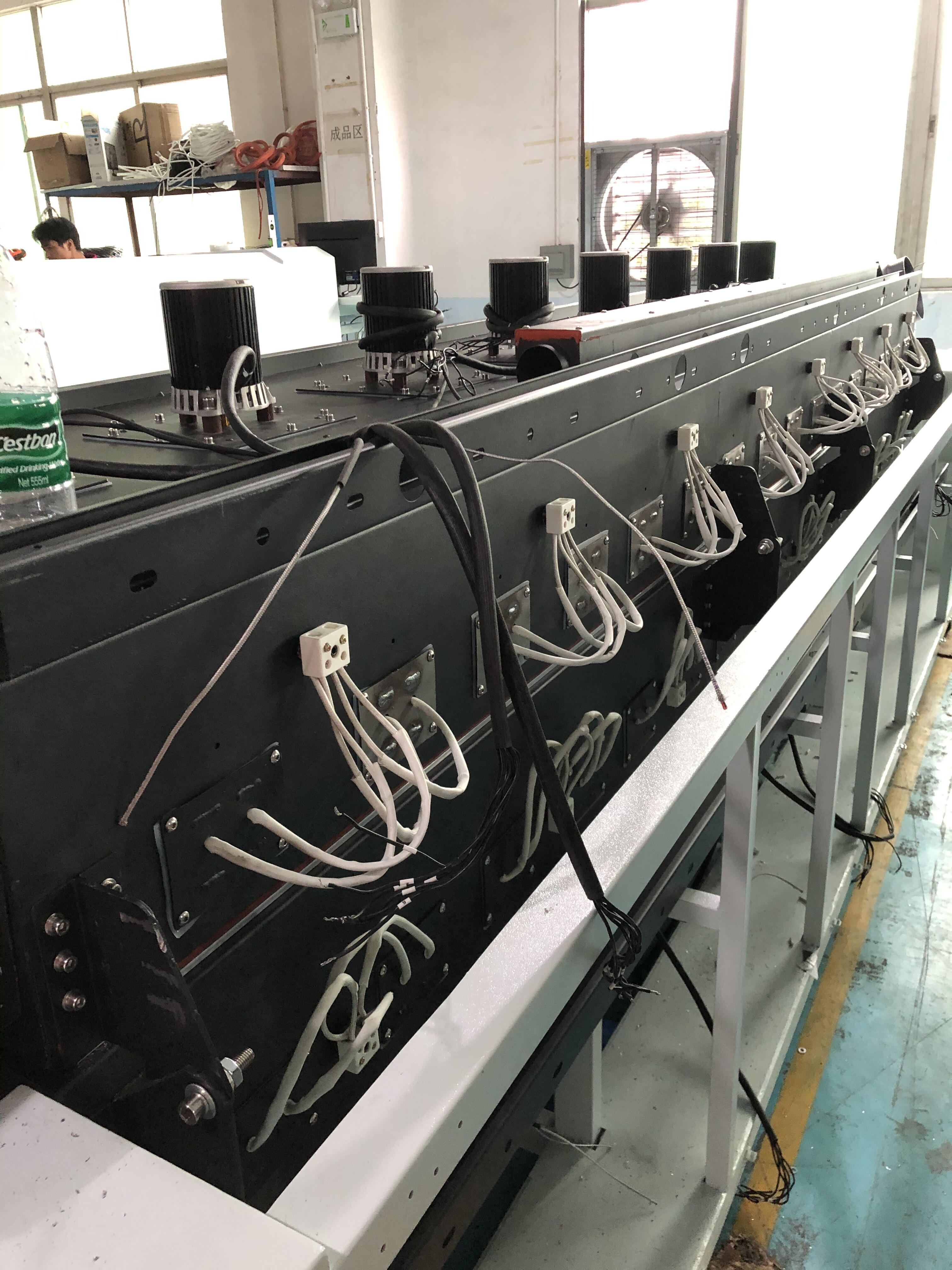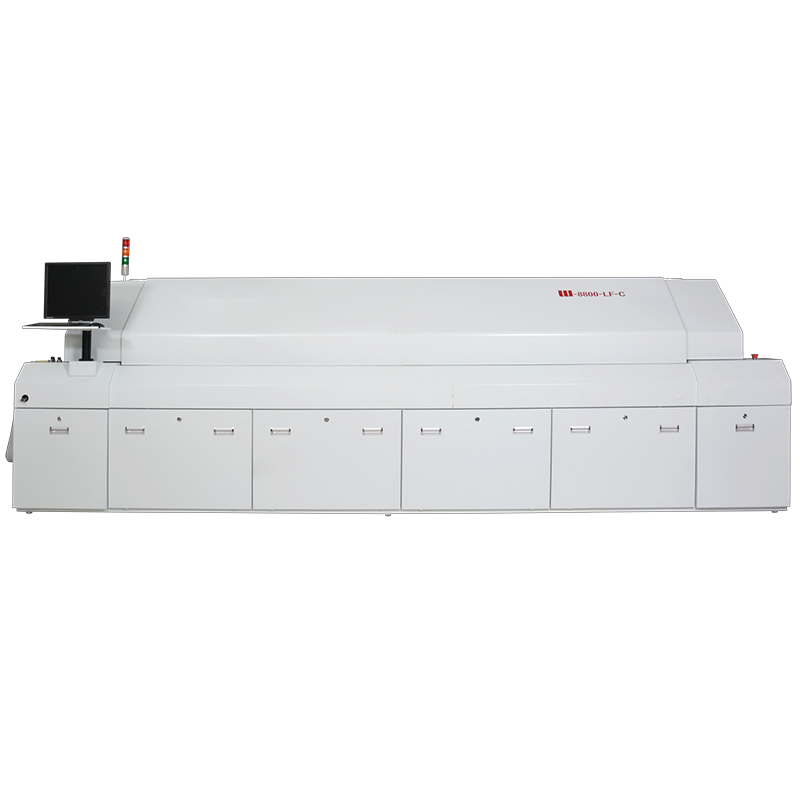E-Mail-Formatfehler
emailCannotEmpty
emailDoesExist
pwdLetterLimtTip
inconsistentPwd
pwdLetterLimtTip
inconsistentPwd


Exploring the SMT Vacuum Reflow Oven: An In-Depth Guide
Surface Mount Technology (SMT) has revolutionized the electronics manufacturing industry, providing efficient and reliable methods for assembling electronic components. Central to this process is the reflow oven, a crucial piece of equipment that ensures the correct soldering of components onto printed circuit boards (PCBs). Among the various types of reflow ovens, the SMT vacuum reflow oven stands out for its advanced capabilities and unique benefits. In this comprehensive blog post, we will delve into the intricacies of the SMT vacuum reflow oven, exploring its features, benefits, and applications.
What is an SMT Vacuum Reflow Oven?
An SMT vacuum reflow oven is a specialized type of reflow oven used in the assembly of PCBs. It utilizes a vacuum environment during the reflow process to minimize the presence of air bubbles and voids in the solder joints. This results in stronger and more reliable connections, which are critical for the performance and longevity of electronic devices.
Key Features of SMT Vacuum Reflow Ovens
1. Vacuum Technology: The primary feature is their use of vacuum technology. By creating a vacuum environment during the reflow process, these ovens significantly reduce the risk of solder joint defects caused by air entrapment.
2. Precise Temperature Control: The vacuum reflow ovens are equipped with advanced temperature control systems that ensure the optimal heating and cooling rates. This precision is crucial for achieving high-quality solder joints.
3. Lead-Free Compatibility: As the electronics industry moves towards more environmentally friendly practices, lead-free reflow ovens have become increasingly important. The vacuum reflow ovens are designed to handle lead-free soldering processes, complying with international standards and regulations.
4. Efficient Heat Distribution: These ovens feature efficient heat distribution systems that ensure uniform heating across the PCB. This uniformity is essential for preventing thermal stress and ensuring consistent solder quality.
How Does an SMT Vacuum Reflow Oven Work?
1. Preheating: The PCB is gradually heated to a specific temperature to activate the flux and remove any moisture from the components and the board. This stage is crucial for preparing the PCB for the soldering process.
2. Soaking: During the soaking stage, the temperature is maintained at a level that allows the solder paste to activate fully without reaching its melting point. This ensures that all components are uniformly heated.
3. Reflow: In the reflow stage, the temperature is increased to the melting point of the solder paste, allowing it to flow and form solid solder joints. This is where the vacuum environment comes into play, minimizing void formation in the solder joints.
4. Cooling: After reflow, the PCB is gradually cooled to solidify the solder joints and prevent thermal shock. Proper cooling rates are essential to avoid stress fractures in the solder joints.
Benefits of Using an SMT Vacuum Reflow Oven
1. Enhanced Solder Joint Quality: The vacuum environment significantly reduces the risk of voids and air bubbles, resulting in stronger and more reliable solder joints. This is especially important for high-reliability applications such as aerospace and medical devices.
2. Improved Process Control: The precise temperature control and uniform heat distribution provided enhance overall process control, leading to consistent and repeatable results.
3. Lead-Free Soldering: The vacuum reflow ovens are compatible with lead-free soldering processes, making them suitable for manufacturers looking to comply with environmental regulations and industry standards.
4. Increased Yield and Reliability: By reducing defects and improving solder joint quality, the vacuum reflow ovens help increase production yield and the overall reliability of electronic devices.
Choosing the Right SMT Vacuum Reflow Oven Supplier
Selecting the right SMT vacuum reflow oven supplier is crucial for ensuring the success of your electronics manufacturing process. Here are some factors to consider when choosing a supplier:
1. Reputation and Experience: Look for a supplier with a proven track record and extensive experience in the industry. A reputable supplier will have a history of delivering high-quality equipment and excellent customer service.
2. Technical Support and Training: A good supplier should offer comprehensive technical support and training to help you get the most out of your vacuum reflow oven. This includes installation assistance, maintenance support, and troubleshooting services.
3. Customization Options: Different manufacturing processes have unique requirements, so it's important to choose a supplier that offers customization options to tailor the oven to your specific needs.
4. Lead-Free Reflow Oven Compatibility: Ensure that the supplier provides ovens that are compatible with lead-free soldering processes, especially if you are looking to comply with environmental regulations.
5. After-Sales Service: Consider the availability and quality of after-sales service, including spare parts, repairs, and upgrades. A reliable supplier should be able to provide ongoing support to keep your equipment running smoothly.
Leading Suppliers of SMT Vacuum Reflow Ovens
Several companies are renowned for their high-quality SMT vacuum reflow ovens. These suppliers offer a range of models with various features to suit different manufacturing needs:
- Rehm Thermal Systems: Known for their advanced reflow technology and excellent customer support, Rehm Thermal Systems offers a variety of vacuum reflow ovens designed for high-reliability applications.
- Heller Industries: With a strong focus on innovation and efficiency, Heller Industries provides vacuum reflow ovens that are compatible with both traditional and lead-free soldering processes.
- ERSA GmbH: ERSA is a leading manufacturer of soldering equipment, including the vacuum reflow ovens. Their products are known for their precision, reliability, and ease of use.
Applications of SMT Vacuum Reflow Ovens
The vacuum reflow ovens are used in a wide range of industries, each with unique requirements and challenges. Here are some common applications:
Aerospace and Defense
The aerospace and defense industries demand the highest level of reliability and performance from electronic components. The vacuum reflow ovens are ideal for these applications because they produce strong, defect-free solder joints that can withstand harsh environments and extreme conditions.
Medical Devices
Medical devices require precise and reliable electronic assemblies to ensure patient safety and effective operation. The vacuum reflow ovens help achieve the high-quality solder joints needed for medical devices, reducing the risk of failures and improving overall device reliability.
Automotive Electronics
Automotive electronics are subjected to constant vibrations, temperature fluctuations, and other stresses. The vacuum reflow ovens provide the robust solder joints needed to ensure the durability and reliability of automotive electronic systems.
Consumer Electronics
In the consumer electronics industry, manufacturers strive to produce reliable and high-performing products at scale. The vacuum reflow ovens help achieve the consistency and quality required for mass production, reducing defects and enhancing product reliability.
Industrial Equipment
Industrial equipment often operates in demanding environments, requiring electronic assemblies that can withstand tough conditions. The vacuum reflow ovens produce the strong, reliable solder joints needed for industrial applications, ensuring the longevity and performance of the equipment.
Maintenance and Best Practices for SMT Vacuum Reflow Ovens
To maximize the performance and lifespan of your reflow oven, it's important to follow proper maintenance and best practices. Here are some tips to keep your oven in optimal condition:
Regular Cleaning
Regular cleaning of the oven chamber and conveyor system is essential to prevent contamination and ensure consistent performance. Use appropriate cleaning agents and follow the manufacturer's guidelines for cleaning frequency and procedures.
Calibration and Inspection
Periodic calibration of temperature sensors and inspection of heating elements are crucial for maintaining accurate temperature control. Ensure that all sensors and elements are functioning correctly and replace any faulty components as needed.
Preventive Maintenance
Implement a preventive maintenance schedule that includes routine checks and servicing of key components. This helps identify potential issues before they become major problems, reducing downtime and extending the life of the oven.
Operator Training
Ensure that all operators are properly trained on the correct use and maintenance. This includes understanding the control settings, operating procedures, and safety protocols.
Monitoring and Documentation
Maintain detailed records of oven performance, maintenance activities, and any issues encountered. This documentation helps track the condition of the oven over time and facilitates troubleshooting and repairs.
Conclusion
The SMT vacuum reflow oven is a critical component in modern electronics manufacturing, offering advanced capabilities that enhance solder joint quality, process control, and overall reliability. By understanding the features, benefits, and applications of these ovens, manufacturers can make informed decisions to optimize their production processes. Additionally, selecting the right lead-free reflow oven supplier and following best practices for maintenance will ensure the long-term success and efficiency of the manufacturing operation.
Whether you are involved in aerospace, medical devices, automotive electronics, consumer electronics, or industrial equipment, an SMT vacuum reflow oven can provide the high-quality results needed to meet the demands of today's competitive market. Investing in this advanced technology is a step towards achieving excellence in electronic assembly and staying ahead in the ever-evolving electronics industry.

